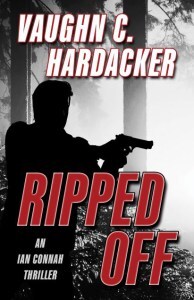Main Character, Protaganist, and Antagonist … who drives the Action In Your Plot?

Vaughn C. Hardacker
In 2002, I realized there was more to writing than just sitting down and putting words onto a page. I had to learn the craft. One of the first things I learned was that every story, whether it a mystery/crime story, a romance, or even a children’s story, must have, as a bare minimum, two characters: a protagonist and an antagonist. I set out to develop two characters for my first Houston/Bouchard novel, SNIPER. I started with my hero, AKA the protagonist, Michael Houston, and then my villain, the antagonist. To refresh my knowledge of the craft, I started reading DRAMATICA: A New Theory of Story by Melanie Anne Phillips and Chris Huntley (available at dramatica.com). The one thing that immediately struck me was their discussion on characters; they maintain that there are several distinct types of characters in any story: the main character, the protagonist, and the antagonist. They define each as:
Main Character: The player through whom the audience experiences the story firsthand.
Protagonist: The prime mover of the plot.
Antagonist: The character opposed to the protagonist.
In many stories, the hero combines the main character and the protagonist. When taken in the context of the definitions above, it is possible to argue that in most cases (especially in mystery and crime/thriller fiction), the villain better fits the definition of the protagonist. It is the villain, not the so-called hero, who is the prime mover of the plot (this is possibly more likely in the thriller genre). The villain acts first, forcing the hero to react for one reason or another. Throughout much of the story, the villain’s actions are the prime movers of the plot.
Here are a couple of examples:

In RIPPED OFF, my most recently published thriller, my main character, retired hitman Ian Connah, walks out of court after his fourth divorce. Intending to pay his lawyer, he contacts his banker, who informs him that he is broke. Harry Sandberg, his financial manager, had absconded with his life savings. Forced to earn enough money to pursue Sandberg, Connah must return to the trade.
In Bram Stoker’s classic Dracula, Count Dracula (antagonist), not Dr. van Helsing (protagonist), drives the plot. Throughout, Dracula is proactive, and van Helsing is reactive.
In each case above, I would argue that the villain is the true protagonist, and the antagonist is the main character or the hero. Who in your story is the protagonist, who is your antagonist, and who is your main character? When I embark on a new project, I spend more time developing the villain than the hero. I was once told: “You write terrific villains, but your heroes are not as strong.” I took that as a compliment. In American Indian culture, the strength of a warrior’s adversaries determined their status within the tribe. Strong enemies force the hero to overcome weaknesses to come out on top.
In your writing, who is the driving force behind the plot? Who is your main character, and who is the true protagonist?
Lea Wait's Blog
- Lea Wait's profile
- 509 followers



